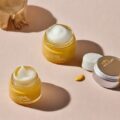As we age, our skin naturally loses some of its youthful elasticity and volume, leading to the development of fine lines and wrinkles. While this is a natural part of the aging process, many people look for ways to minimize these signs and maintain a more youthful appearance. Dermal fillers are a popular and minimally invasive option that can help achieve this goal.
Understanding Dermal Fillers
Dermal fillers are substances injected into the skin that can plump up areas with volume loss or smooth out wrinkles. They are commonly made from hyaluronic acid, a substance naturally found in the skin, which helps to add volume and hydration. Other types include calcium hydroxylapatite, poly-L-lactic acid, and polymethylmethacrylate beads.
Benefits of Dermal Fillers
- Immediate Results: One of the key advantages of dermal fillers is the immediacy of results. Unlike some treatments that require time to show improvements, fillers offer instant enhancement.
- Minimal Downtime: Dermal filler procedures typically take less than an hour, and most people can return to their normal activities immediately afterward.
- Versatility: Fillers can be used to address a variety of concerns, from smoothing out fine lines around the mouth and eyes to adding volume to cheeks or lips.
Types of Dermal Fillers and Their Uses
Different types of dermal fillers are designed for specific areas and concerns. Hyaluronic acid fillers are often used for fine lines and can also add volume to the lips. Calcium hydroxylapatite is typically used for deeper lines and wrinkles, while poly-L-lactic acid is designed to stimulate collagen production for a more subtle, long-term improvement.
Choosing the Right Filler for You
Choosing the right dermal filler is crucial for achieving the best results. Factors to consider include the area being treated, the desired effect, and how long you want the results to last. A consultation with a board-certified dermatologist or plastic surgeon can help you make an informed decision.
What to Expect During and After the Procedure
During the procedure, the filler is injected into the targeted areas using very fine needles. The process is generally well-tolerated with minimal discomfort. Afterward, there may be some swelling or bruising, which typically subsides within a few days. Results can last from several months to a couple of years, depending on the type of filler used.
FAQ About Dermal Fillers
Are dermal fillers safe?
When administered by a qualified professional, dermal fillers are generally safe. It’s important to discuss any allergies or skin conditions with your practitioner beforehand.
How long do dermal fillers last?
The longevity of dermal fillers varies depending on the type used and the individual’s metabolism. On average, results can last from 6 months to 2 years.
Can dermal fillers be removed?
Some fillers, like those made from hyaluronic acid, can be dissolved with an enzyme called hyaluronidase if necessary.
Is there any downtime?
Most people can return to their normal activities immediately after the procedure, though it’s advisable to avoid strenuous exercise for 24 hours.
Will I look natural?
When performed by a skilled practitioner, dermal fillers can provide a natural-looking enhancement. It’s key to have a thorough consultation to set realistic expectations.









